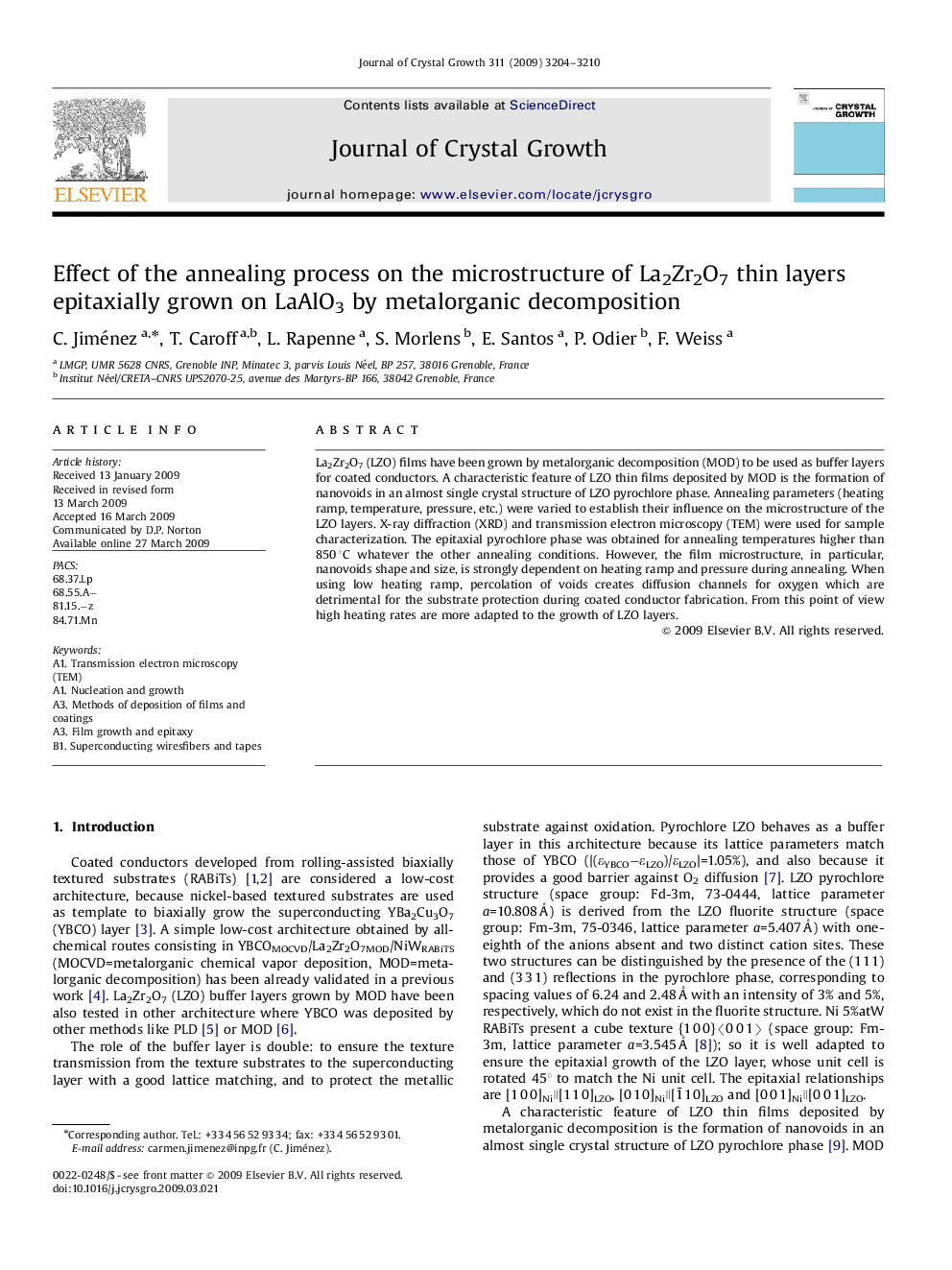| Article ID | Journal | Published Year | Pages | File Type |
|---|---|---|---|---|
| 1794300 | Journal of Crystal Growth | 2009 | 7 Pages |
Abstract
La2Zr2O7 (LZO) films have been grown by metalorganic decomposition (MOD) to be used as buffer layers for coated conductors. A characteristic feature of LZO thin films deposited by MOD is the formation of nanovoids in an almost single crystal structure of LZO pyrochlore phase. Annealing parameters (heating ramp, temperature, pressure, etc.) were varied to establish their influence on the microstructure of the LZO layers. X-ray diffraction (XRD) and transmission electron microscopy (TEM) were used for sample characterization. The epitaxial pyrochlore phase was obtained for annealing temperatures higher than 850 °C whatever the other annealing conditions. However, the film microstructure, in particular, nanovoids shape and size, is strongly dependent on heating ramp and pressure during annealing. When using low heating ramp, percolation of voids creates diffusion channels for oxygen which are detrimental for the substrate protection during coated conductor fabrication. From this point of view high heating rates are more adapted to the growth of LZO layers.
Related Topics
Physical Sciences and Engineering
Physics and Astronomy
Condensed Matter Physics
Authors
C. Jiménez, T. Caroff, L. Rapenne, S. Morlens, E. Santos, P. Odier, F. Weiss,
